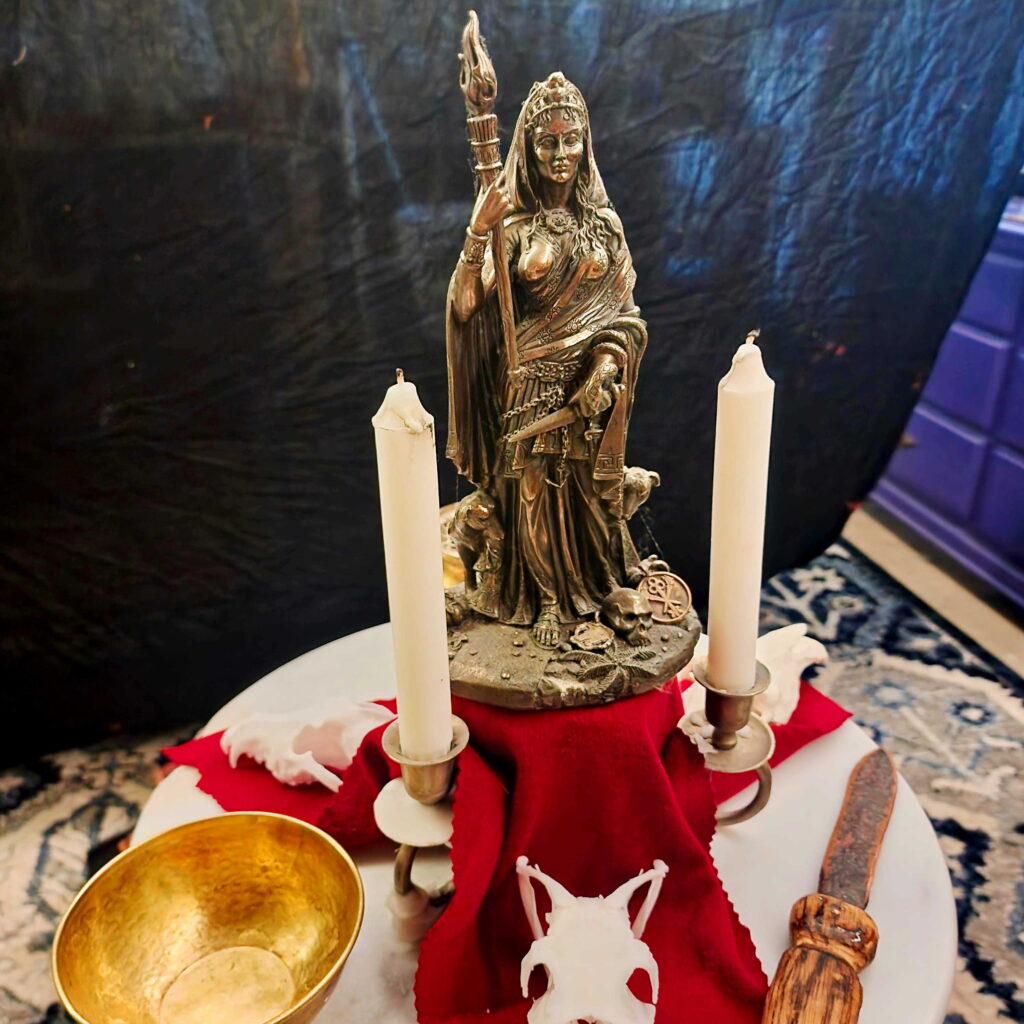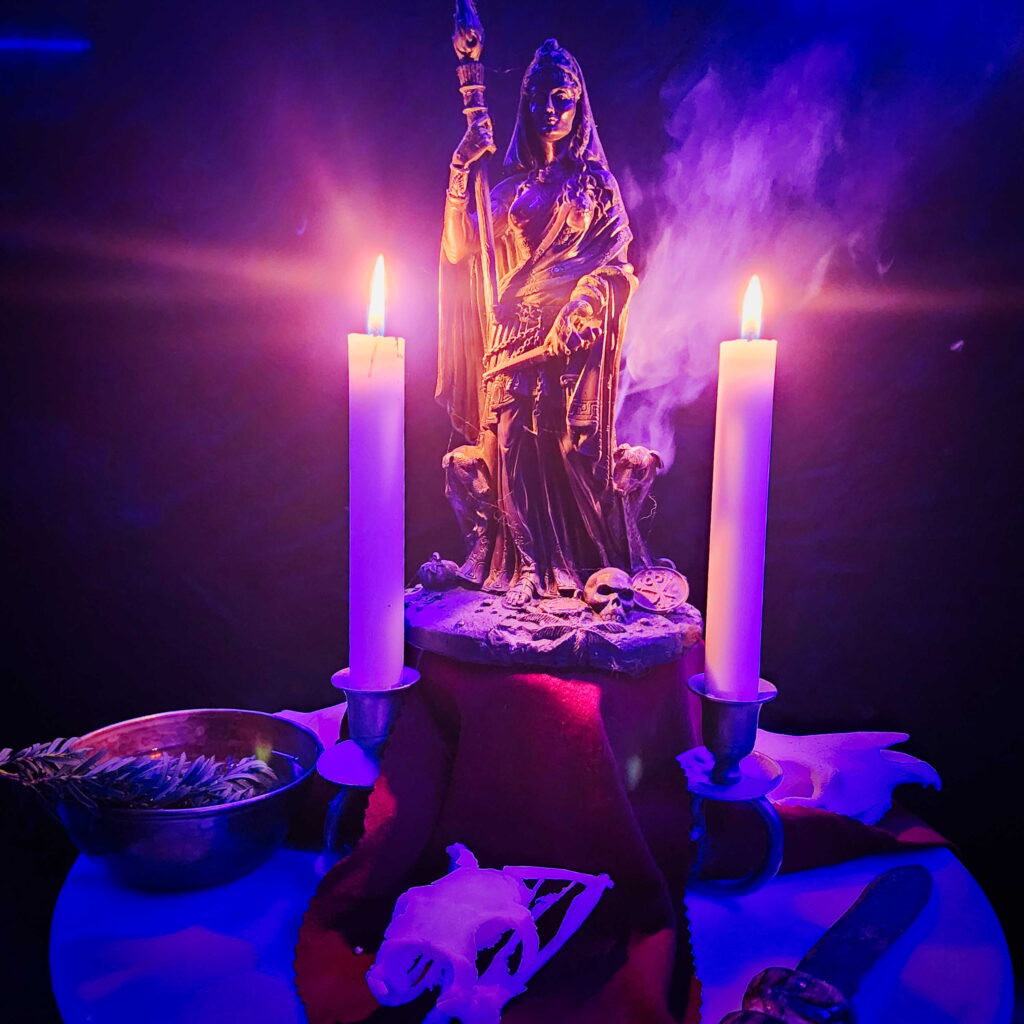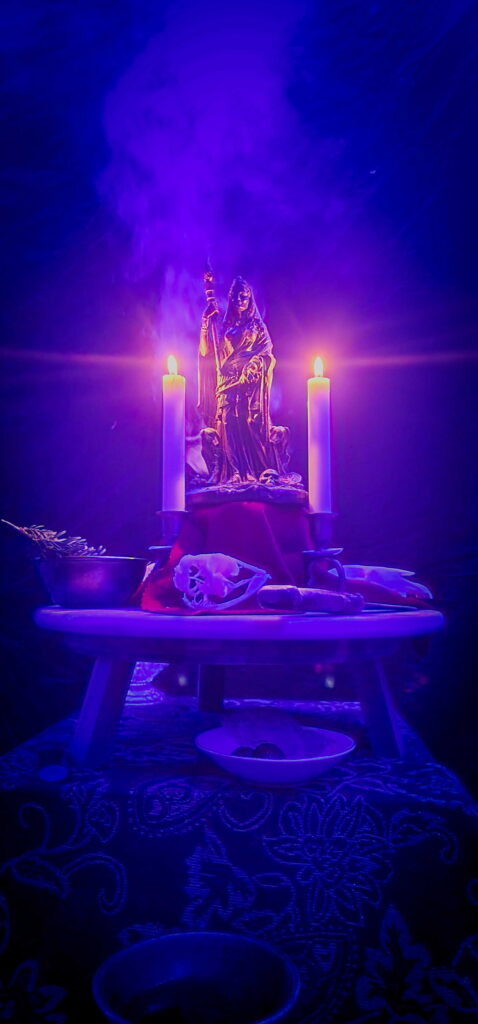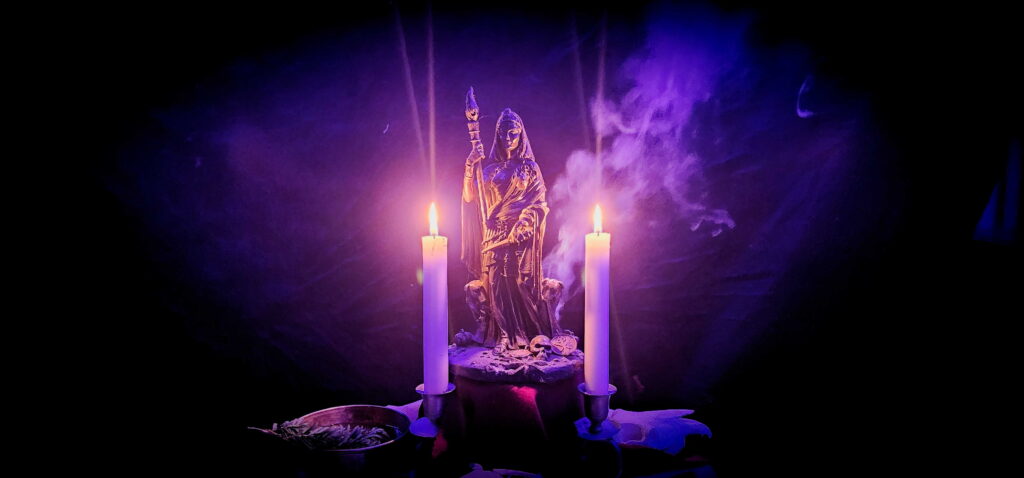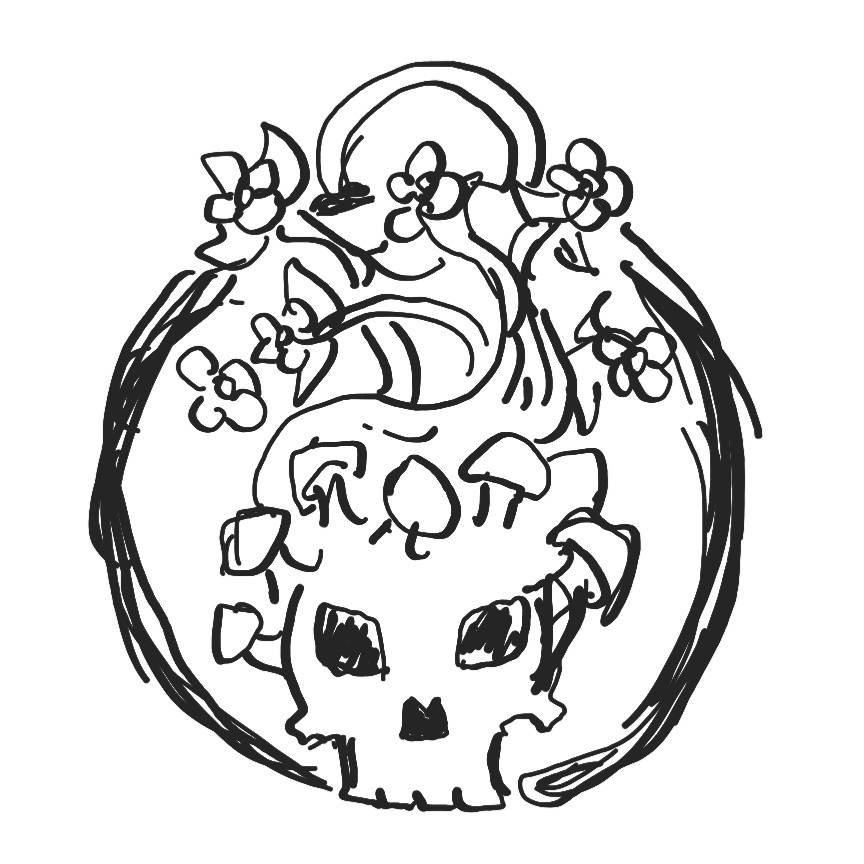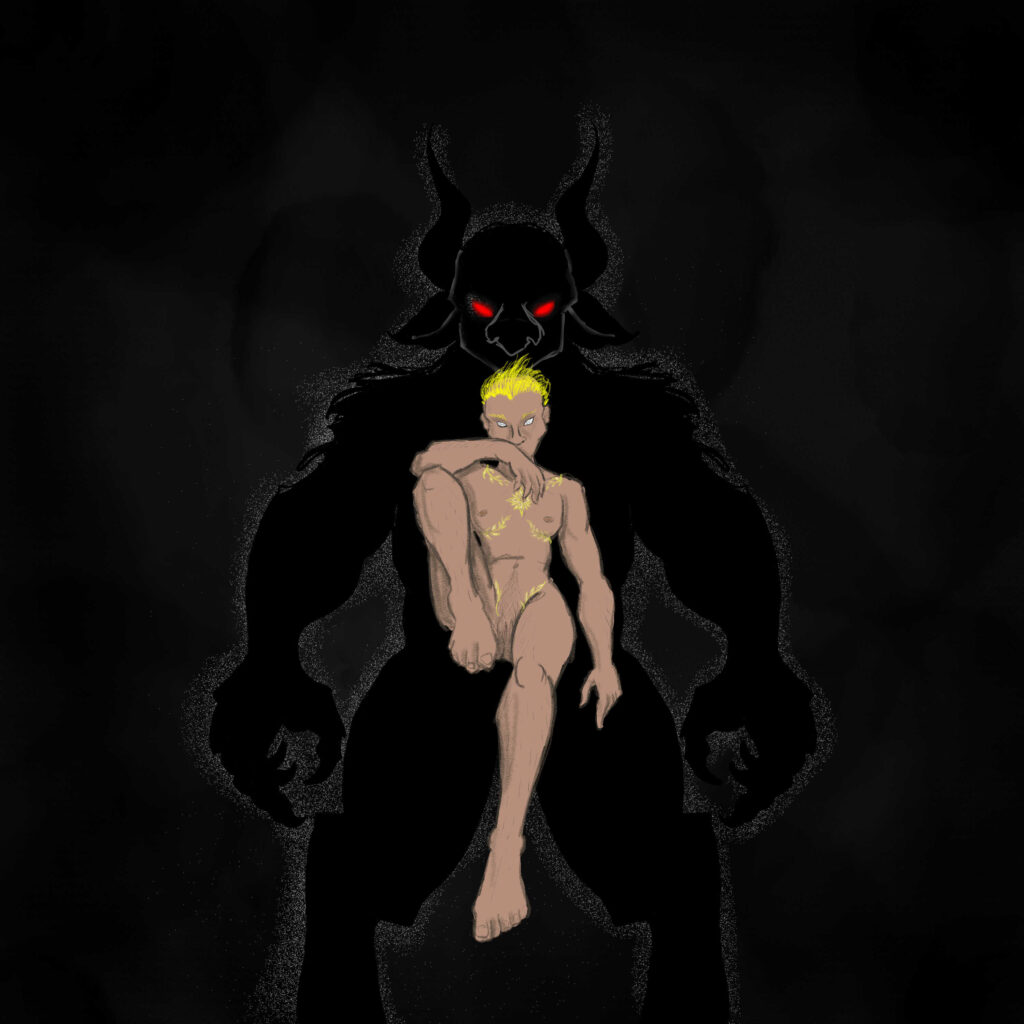There are seven gods who receive daily offerings in my house. (Though I only speak of six with any regularity, there is also the Serpent Faced God of PGM XII 153-60.) As I have said before, I have no impulse toward exclusive worship – not henotheism, not monotheism, not even monism – so I had no notion of suspending those offerings when I sat down to resume the work of the Hekataeon. But it had been my intention to devote my active attention to Hekate alone. The gods, it seemed, had other plans.
In retrospect, this should not have come as a surprise.
Over the last two years, in particular, there have been times when my morning rituals have evoked intense visionary experiences. The visions that resulted in the triptych images of Baphomet, and the vision of Lucifer as the Dweller on the Threshold, were the most significant that I ever felt comfortable relating publicly. They were not, by any means, the most intense. I could feel the hands of the gods upon me, see their faces before my eyes, smell their headdy, uncanny musk.
But it seemed that I never had more than two or three visions of one god before other gods began appearing, as well. Already struggling to deal with the implications of the first visions, the addition of other powers to that mix was inevitably more than I could handle. I retreated from the experiences, and all the gods fell silent.
My friends who were raised with more religion than I was laugh at me when I wonder aloud if having been raised in a different environment would have better prepared me for these experiences. But I think they underestimate how alienated my upbringing was from divinity. In the same way I was raised vaguely aware that queer people existed, but with a strong implication that they were all far away and that I would never meet one, I was raised in a place where religion was just a social control mechanism, where people of strong convictions and intense experiences were alien and threatening. As a child, they were snake-handlers and madmen on television; as a teen, they were still that, and they were also Pat Robertson and the 700 Club: people who wanted me dead for being effeminate, for playing D&D, and for dabbling in witchcraft.
My earliest epiphanies were always of singular divinities, always months apart. They were also largely spontaneous: the presence of a god intruding on what had been intended to be some other sort of mystical experience. One of the earliest such was Rhea/Kybele appearing to demand I bring my then-friend Pasiphae to her. (I still wonder, sometimes, if that contact ever happened, or if Pasiphae’s commitment to a faceless generic Goddess was impenetrable to the real divine.)
Now, working my way through the first and then the second nine days of the Hekataeon, I am once more blessed/plagued by a cacophony of divinity. Baphomet shows me new faces every two or three days, revealing how the trinity/triptych aspects I have been shown unfold into seven (and nine) planetary epiphanies. Their Lunar aspect has much in common with the White Lady, and Saturnian Baphomet shares much with The Man in Black. Their Solar manifestation is Akephelos (Headless), and caries the Light of Creation, Phanes, like Eros. I have glimpsed their Martial aspect, bull-headed, armed and armored, which I so far call Korebantes, and that bull-headed vision gave way to another: a starry, mystical, Neptunian which I have (for lack of a better name so far) dubbed Asterion.
Aphrodite has blessed the photoshoot I did in her honor. Eros and Lucifer and Dionysos all loom large at their altars. My familiar spirits have begun speaking again on the regular, giving me practical advice for how to achieve my goals.
On days three and four and five and six of The Call, this was … unsettling. Distracting. Dissonant.
But, speaking with my compatriots at our regular New Moon Esbat, as we had all concluded our first round of The Call, those with more experience than I with the gods assured me that this was common. So, too, have a handful of people around the internet when I spoke of this problem. “Problem.”
So, even as I find the experience unsettling, I am reassured. As alien as this experience is to my upbringing and my expectations, it appears to be … typical. (As hurtful as that word is to us mystics and madmen.)
And so, as uncomfortable as it is, and as hard as it makes things from one day to the next, I am going to try to sit with that discomfort. To try to find the symphony in the cacophony.
After all, am I not a mystic? Am I not here for gnosis of the gods and the cosmos? Did I not tell Hekate, herself, that I am here to see where the road will take me? Did I not seek out each of these gods, too, even as I have sought out Hekate? Did I not seek out some of them – Dionysos, Baphomet – even before her?
This is the work. This is what I have come here to do. I have taken the names that I have taken. Each day I repeat them, both assertion and demand: I am [That Seer of Antiquity], I am [The Satyr Who Is a Magician], I am [The Sacred Companion]. I will live up to those ambitions. I will live up to those expectations.
When the gods speak, I will strive to listen.
If you want to get my posts a week before everyone else, to see the magical experiments that I don’t share with the public, to get first dibs on my elected talismans and fine art jewelry, or just want to support my work, you can do so through patreon. If you’d like to make a one-time donation, or don’t want to deal with all the non-occult content I post on patreon, I also have a ko-fi.
